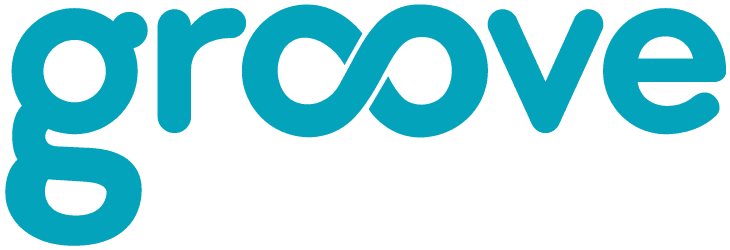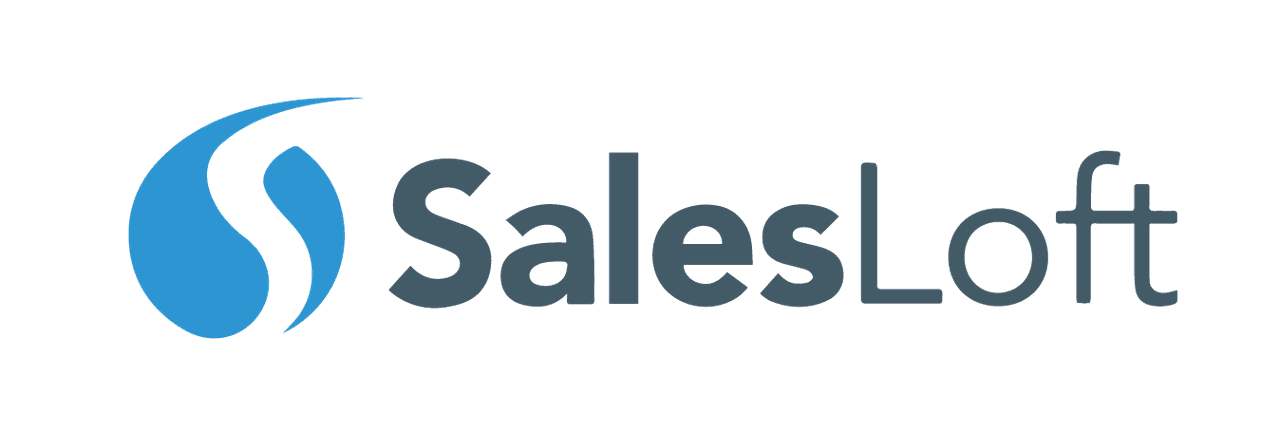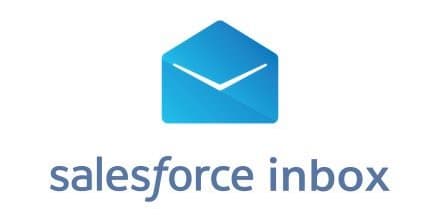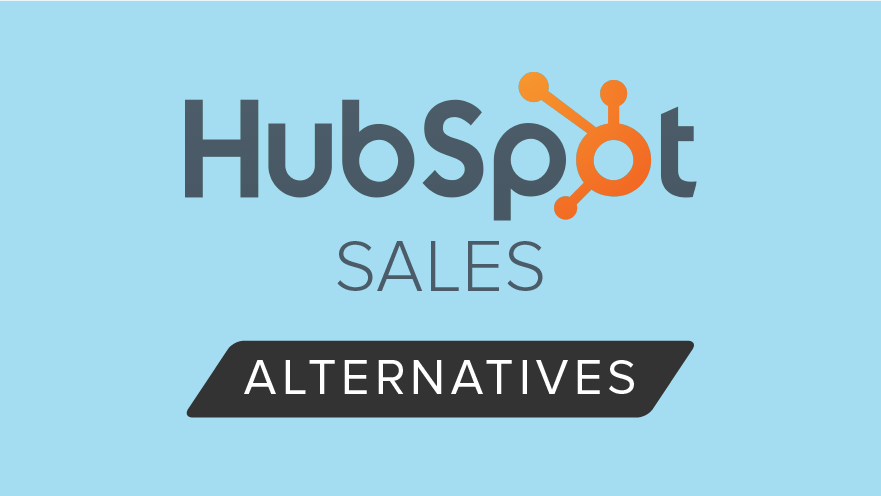Hubspot Sales Alternatives: Hubspot Sales vs Similar Tools
Jenny Keohane
HubSpot Sales Hub is a sales CRM software that helps teams deepen relationships and manage their pipeline.
Sales Hub is built on top of HubSpot CRM. It’s one of the four main HubSpot products known as their “hubs” (for sales automation, marketing automation, services, and CMS). Some key features of the Sales Hub include email templates, appointment/meeting scheduling, and email tracking.
Although HubSpot Sales is a powerful tool, there are quite a few competitors in the market that stack up and have similar features plus additional functionalities.
Let’s look at some of the top HubSpot Sales alternatives in the market today.
Here’s what we’ll cover:
- HubSpot Sales vs Yesware
- HubSpot Sales vs Groove
- HubSpot Sales vs Outreach
- HubSpot Sales vs SalesLoft
- HubSpot Sales vs Salesforce Inbox
HubSpot Sales vs Yesware

Yesware is an add-on for Outlook and Gmail that gives sales professionals everything they need to prospect, schedule meetings, and follow up — right from their inbox.
Both HubSpot Sales and Yesware have key functionalities such as real-time email tracking, email templates, meeting scheduler, and campaigns.
But there are also some differentiating factors between the two solutions. We are obviously a bit biased, but here’s why we think Yesware is a great alternative to HubSpot Sales.
First, when it comes to pricing, Yesware is much more affordable. Now let’s look at the top 3 differences.
1. Implementation
One of the main differentiators between Yesware and HubSpot Sales is the complexity of the platform and the onboarding required to implement the tools.
According to Hubspot, their implementation for HubSpot Sales Hub is a flat rate of $3,000 for Enterprise onboarding plus additional fees for additional technical consulting services.
No matter the company size, you won’t pay a dime to onboard Yesware. The tool is easy to pick up with the assistance you need for onboarding, easy-to-follow tutorials, and live training sessions.
2. Email Tracking Visbility
Yesware makes it much easier to view when recipients open emails with various ways to see engagement throughout your inbox. You’ll see a pop-up notification in real-time but you can also access tracking data in your activity feed, your inbox/sent folders, or within an email thread.
Yesware has tracking icons in your inbox and sent folders to see at a quick glance who’s engaging with your emails. You’ll see a blue eye icon next to the emails that have been opened and can hover over it to see recent activity.
When moving through your inbox, this makes it much easier to gauge which emails you want to prioritize without having to move to another tab to view email tracking activity.
3. Template Reporting
Although HubSpot Sales Hub has other reporting capabilities, users report a lack of template insights and statistics such as open and click rates per template.
Yesware builds reports right in your inbox, including Templates by Templates Report and Templates by User Report.
These reports break down the usage and performance of personal and team templates (such as open rate and reply rate per template) so your team can see what’s working, what’s not working, and make data-driven decisions.
…and much more.
You be the judge. Try it for yourself, for free.
HubSpot Sales vs Groove

Groove is a sales engagement platform that is native to Salesforce.
Groove and HubSpot Sales Hub have similar functionalities such as email campaigns, email templates, and analytics.
When it comes to differences, Groove has further functionalities for managing flows and task management to collaborate on account lists from Salesforce.
Whereas Hubspot Sales Hub has further functionalities such as Canned Snippets for common phrases and Conversational Bots to help qualify leads. HubSpot Sales Hub also has a mobile app as well.
Also, if you’re a Salesforce user, Groove may be more compatible because of Hubspot’s limited integration.
HubSpot Sales vs Outreach

Outreach is a sales engagement platform made to help drive efficiency and effectiveness for marketers, sales development reps, closing, and success teams.
Both tools include a dialer, sequences, and sales analytics. They’re also both available for Gmail and Outlook.
Comparing the two, Outreach has more robust reporting capabilities for A/B testing emails and email campaigns. Outreach also has more extensive task management functionalities and workflow governance in the platform itself.
Looking at Hubspot Sales Hub, the tool has some additional unique features such as Live Chat to connect with prospects when they’re viewing your website and Conversational Bots to help qualify leads. Another benefit is that the tool has an iPhone and Android app.
It’s also important to note that Hubspot Sales Hub states they’re designed with small businesses to mid-sized businesses in mind, where Outreach is designed with larger businesses in mind.
HubSpot Sales vs SalesLoft
SalesLoft is a sales engagement platform that helps B2B sales teams close more deals.
HubSpot Sales Hub and SalesLoft have similar features such as sales playbooks, sequences, and sales analytics, but also have some differences.
Comparing the two, SalesLoft has more coaching features such as their Conversation Intelligence which includes call and video recording and transcription. SalesLoft also has the feature Deal Intelligence which helps you view your pipeline health.
HubSpot Sales Hub has some unique features like Live Chat and Quotes where you can create and share professional-looking quotes with prospects. The tool also has a mobile CRM app for users on the go.
HubSpot Sales vs Salesforce Inbox

HubSpot and Salesforce are both CRM platforms (cloud-based customer relationship management) with applications for sales, marketing, and customer service. Both of these CRMs have a sales application: HubSpot Sales Hub and Salesforce Inbox.
These two tools are pretty similar, making Salesforce Inbox a competitive HubSpot Sales alternative. Both are available for Gmail and Outlook as well as a mobile application. The tools both have key features to automate the sales process such as templates and calendar sharing.
When comparing the two, it looks like HubSpot Sales Hub has a better email campaigns feature (called sequences), with more ability to customize emails and use a variety of templates in your campaign.
On the other hand, it looks like Salesforce Inbox has further features around coaching and providing sales managers with more tailored reports based on rep activity.
Why Sales Teams Continue to Choose Yesware
Yesware is trusted by high performing sales professionals at thousands of world-class organizations. Why? Yesware is made for the whole team — combining rep productivity with managerial visibility.
This all-in-one tool gives sales professionals everything they need to prospect, schedule meetings, and follow up, without having to learn a complex software or leave their inbox. At the same time, Yesware gives managers everything they need to track, analyze, and standardize what’s working across the board. And all of this is done in the inbox you’re familiar with.
Power your sales workflows and drive revenue growth today with Yesware. Give it a try, for free, to see for yourself.
Other Alternatives:
- SalesHandy Alternatives
- Mixmax Alternatives
- Mailshake Alternatives
- SalesLoft Alternatives
- Reply Alternatives
- Groove Alternatives
- Outreach Alternatives
- Salesforce Inbox Alternatives
Get sales tips and strategies delivered straight to your inbox.
Yesware will help you generate more sales right from your inbox. Try our Outlook add-on or Gmail Chrome extension for free, forever!
Related Articles
Jenny Keohane
Jenny Keohane
Jenny Keohane
Sales, deal management, and communication tips for your inbox

